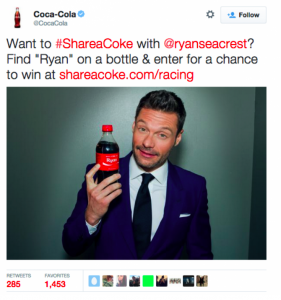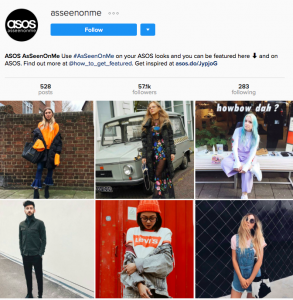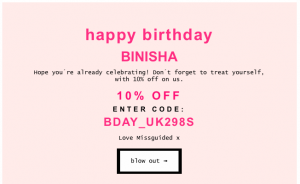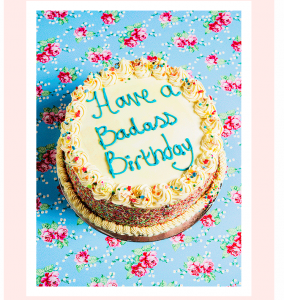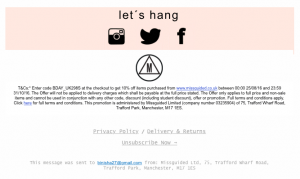Petrescu and Korgaonkar (2011) describe viral marketing as an online and offline marketing activity performed with the purpose to influence consumers to communicate commercial messages to other consumers. Whilst Montgomery (2001) explains that viral marketing is like a virulent flu virus that infects customers with an advertising message that passes onto another customer. Phelps et al (2004) simply states it is the process of honest communication among consumer networks – similarly to word-of-mouth. Though all three definitions share the notion that viral marketing is a consumer-to-consumer process, Modzelewski (2000) differs the true meaning of viral marketing from word-of-mouth in that “the value of the virus to the original consumer is directly related to the number of other users it attracts” (p.30).
Brands can maximize its reach if they successfully produce content that consumers will share. Consequently, shares have become an increasingly useful advertising metric. How do marketers ensure their campaigns will have this affect?
What is considered as valuable virality? The drivers…
Emotional Connection
Campaigns that portray physiological arousal by evoking emotions increase the likelihood of content going viral, this is supported by Akpinar and Berger (2017) whom also suggest emotional appeals are more likely than informative appeals to be shared. Your behaviour can be influenced by emotional triggers such as feelings experienced after seeing, hearing or reading some information. As a result, brands need to integrate this into their content, as it will help the message to resonate more effectively with the target audience and compels the consumer to take action. To understand the best emotional drivers, Robert Plutchik’s ‘Wheel of Emotions’ can be applied. Libert and Tynski (2016) explored emotions that make marketing campaigns go viral and found Curiosity, Amazement, Interest, Astonishment, Uncertainty and Admiration provoked to increase impact. However if the Ad is perceived as nothing more than a blatant sell attempt, the lesser the virality (Berger 2014; Tucker 2015).

Click here to find out more on creating emotional viral content
Example: Dove – Real Beauty Sketches Campaign 2013
https://www.youtube.com/watch?v=XpaOjMXyJGk
An emotional connection was made effectively throughout viewing the video by establishing a powerful message inspiring women to feel good about themselves; this influenced behaviour and compelled people to take action. The campaign went viral and received a positive reaction: 7,244 Retweets.


User-generated content
User-generated content (UGC) refers to any form of content or media (such as blogs, tweets, videos, etc.) and other forms created by users online, made available via websites and/or social media platforms (MultiLingual, 2016). Social media allows the creating and exchange of UGC – usually someone with an interest in the brand (Kaplan and Haenlein, 2010). Not only is it entertaining, it makes the audience feel apart of the campaign. Implementing this into your campaign will increase engagement rates and more people will share it if it is interactive.

Example: Starbucks – White Cup Contest Campaign
Asking fans to doodle away on their reusable cups, paying the best with $300 gift cards in exchange for UGC rights. Starbucks reaped the rewards of the contest, by generating 4,000 submissions in just three weeks. They proved they understood the importance visions, art and voices – and that the brand is listening.
Put simply, user generated content is the perfect opportunity to promote your brand and share knowledge about the product on a global scale. According to Kissmetrics (2015) 25% of search results for the world’s largest brands are linked to UGC. Brands can significantly reap the rewards in terms of brand awareness and customer loyalty.
However, there are also risks of launching UGC campaigns to increase valuable virality. Ultimately, you’re providing a platform for the consumers to speak about your brand – good or bad – some campaigns can spiral out of control and have adverse effects for a company. Here’s how to avoid UGC backlash!
Does it really make a difference to your sales?
According to Akpinar and Berger (2017) although emotional content and UGC increase the likeliness of the campaign to be shared, Tucker (2015) explains that ad persuasiveness decreases by 10% for every million views a video ad reaches. However, informative appeals boost the perception of the brand and purchase because ultimately the brand is an integral part of the ad content. Therefore, by combining emotional content that boost sharing and bolstering brand-related outcomes, brands can create a valuable virality campaign.
Example: Evian’s Roller Babies
http://www.youtube.com/watch?v=pO6AvKv2WdU
The Evian’s Roller Babies Campaign is the highest shared ads of all time with 55 million views, however they made little impact on sales.
Informative Appeals
Informative advertising supplies factual, verifiable information, or logically relevant to the product to an extent that consumers will assess the products attributes after screening this kind of advertisement (Puto and Wells, 1984; Puto and Hoyer, 1990). According to Royo-Vela, (2005) emotional integral and informative ads create a favourable interpretation about the persuasive attempts. Brands can implement this in a way that allows them to increase brand knowledge for the customer and in turn boost brand evaluation and purchase intent.
Example: Chipotle – The Scarecrow
https://www.youtube.com/watch?v=lUtnas5ScSE
Gaining just a little over 17.7 million views on YouTube alone, Chipotle initiates important conversation about our food system and their commitment to sustainability. They have done this through dark and eerie visuals to the uplifting scenes towards the end that leaves the viewer feeling joy when the scarecrow brings his fresh products to the market. Whilst the emotive appeals has increased its virality, Chipotle have managed to produce informative appeals about where their food comes from that leave the consumers to assess the products and make decisions on purchase based on this information.
References
Akpinar, E. and Berger, J. (2017). Valuable Virality. Journal of Marketing Research, 54(2), pp.318-330.
Berger, J. and Milkman, K. (2012). What Makes Online Content Viral?. Journal of Marketing Research, 49(2), pp.192-205.
Berger, Jonah (2014), “Word of Mouth and Interpersonal Communication: A Review and Directions for Future Research,” Journal of Consumer Psychology, 24 (4), 586–607.
Jones, K., Libert, K. and Tynski, K. (2017). The Emotional Combinations That Make Stories Go Viral. [online] Harvard Business Review. Available at: https://hbr.org/2016/05/research-the-link-between-feeling-in-control-and-viral-content [Accessed 6 May 2017].
Johnston, C. (2017). Creating emotional viral content – Adoreboard. [online] Adoreboard. Available at: https://adoreboard.com/creating-emotional-viral-content/ [Accessed 6 May 2017].
Kissmetrics. (2015). [Blog] A Blog About Analytics Marketing and Testing. Available at: https://blog.kissmetrics.com/social-media-statistics/ [Accessed 6 May 2017].
Liu, X., Burns, A. and Hou, Y. (2017). An Investigation of Brand-Related User-Generated Content on Twitter. Journal of Advertising, 46(2), pp.236-247.
Modzelewski, M. F. (2000). Finding a Cure for Viral Marketing Ills. [online] DMN. Available at: http://www.dmnews.com/dataanalytics/finding-a-cure-for-viral-marketing-ills/article/68355/ [Accessed 6 May 2017].
Montgomery, A. (2001). Applying Quantitative Marketing Techniques to the Internet. Interfaces, 31(2), pp.90-108.
MultiLingual (2016), ‘Multilingual User Generated Content Expands Your Global Reach’ 2016, Multilingual, 27, 8, pp. 24-27, Business Source Complete, EBSCOhost, viewed 26 April 2017.
Petrescu, M. and Korgaonkar, P. (2011). Viral Advertising: Definitional Review and Synthesis. Journal of Internet Commerce, 10(3), pp.208-226.
Phelps, J., Lewis, R., Mobilio, L., Perry, D. and Raman, N. (2004). Viral Marketing or Electronic Word-of-Mouth Advertising: Examining Consumer Responses and Motivations to Pass Along Email. Journal of Advertising Research, 44(4), pp.333-348.
Puto, Christopher P. and Robert W. Hoyer (1990), “Transformational Advertising: Current State of Art,” in Emotion in Advertising: Theoretical and Practical Explorations, Stuart J. Agres, Julie A. Edell, and Tony M. Dubitsky, eds., Westport, CT:Quorum Books, 69-80.
Puto, Christopher P. and William D. Wells (1984), “Informational and Transformational Advertising: The Differential Effects of Time,” Advances in Consumer Research, 11, 638-643
Royo-Vela, M. (2005). Emotional and Informational Content of Commercials: Visual and Auditory Circumplex Spaces, Product Information and Their Effects on Audience Evaluation. Journal of Current Issues & Research in Advertising, 27(2), pp.13-38.


